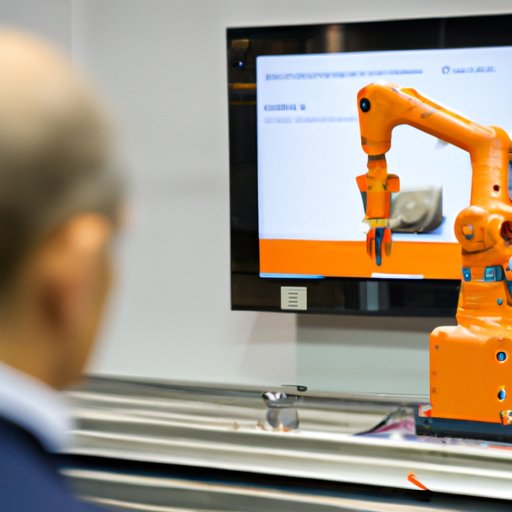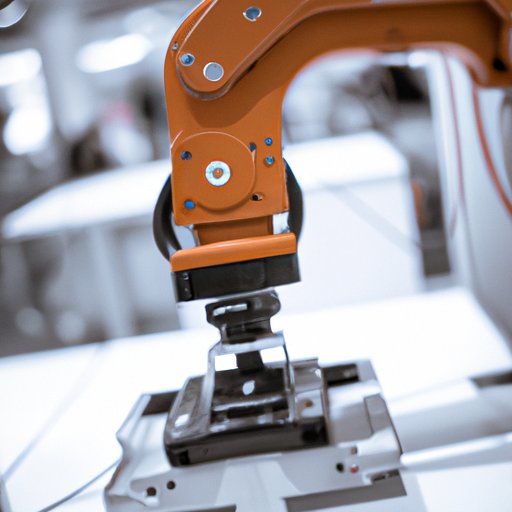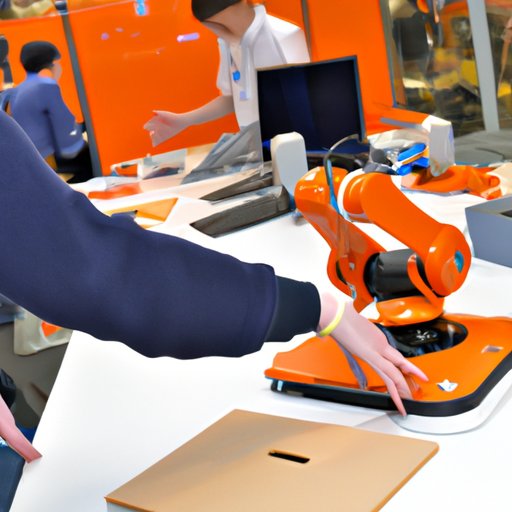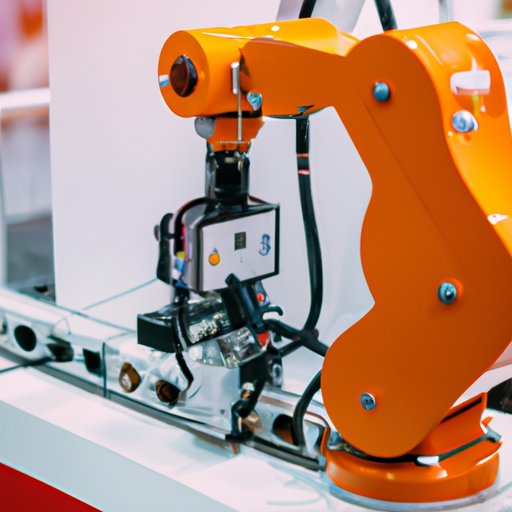Introduction
Kuka robots are widely used in industrial automation and manufacturing, as well as for research and development. Programming these robots can be a complex task, but it is essential for getting the most out of them. This article provides an in-depth guide on programming Kuka robots, from the basics to advanced features.
What is Kuka Robot Programming?
Kuka robot programming is the process of creating instructions for a Kuka robot to perform a specific task. It involves understanding the robot’s capabilities and limitations, as well as the application environment. Programming Kuka robots requires knowledge of the robot’s software, hardware components, and safety protocols.
Why Should You Learn How to Program Kuka Robots?
Programming Kuka robots can be beneficial to many industries, including automotive, aerospace, medical, and manufacturing. By learning how to program Kuka robots, you can increase efficiency and productivity, reduce costs, and improve product quality. Additionally, Kuka robots are highly adaptable and can be programmed for a variety of tasks.
Step-by-Step Guide on Programming Kuka Robots
To get started with Kuka robot programming, you need to understand the basic components of Kuka robotic software. Kuka robots use a range of software packages, such as KUKA|prc, KUKA|sim, and KUKA|sunrise. Each of these packages has its own set of tools and features that can be used to program Kuka robots.

Understanding the Basic Components of Kuka Robotic Software
Kuka robot programming is based on two main components: the robot controller and the programming language. The robot controller is responsible for receiving commands from the programming language and executing them. The programming language is used to create instructions that tell the robot what to do. Commonly used languages include KRL (Kuka Robot Language), Java, C++, and Python.
Exploring the Different Types of Kuka Robot Programming
Kuka robots can be programmed for a variety of tasks, including material handling, welding, assembly, and painting. Depending on the type of task, there are different types of Kuka robot programming. For example, for material handling tasks, robots can be programmed using kinematics and dynamics. For welding tasks, robots can be programmed using arc welding parameters. For assembly tasks, robots can be programmed using joint coordinates.

Learning the Basics of Kuka Robot Programming
Once you have a basic understanding of the Kuka robot programming components, you can begin to learn the basics. This includes understanding how to write programs, debug programs, and test programs. Additionally, you should also learn about safety protocols, as well as the different types of sensors and actuators used in Kuka robots.
How to Utilize Kuka’s Robotic Software for Maximum Efficiency
Kuka’s robotic software is designed to help users achieve maximum efficiency when programming Kuka robots. This includes optimizing workflows, developing automated workflows, and utilizing advanced features. With the right tools, you can maximize the performance of your Kuka robots and streamline processes.

Optimizing Your Workflow with Kuka Robotics
Kuka’s robotic software can be used to optimize your workflow by automating repetitive tasks and reducing the time spent on manual processes. By optimizing your workflow, you can save time and resources, while increasing accuracy and reliability.
Developing Automated Workflows with Kuka Robot Programming
Kuka’s robotic software can be used to develop automated workflows, which can significantly reduce the amount of manual labor required. These automated workflows can be used to automate repetitive tasks, such as material handling, welding, and assembly. Automation can also be used to improve accuracy and reliability, as well as reduce errors.
Utilizing Advanced Features of Kuka Robotics
Kuka’s robotic software offers a range of advanced features that can be used to improve the performance of Kuka robots. These features include motion control, path planning, and vision systems. Motion control allows the robot to move accurately and efficiently, while path planning enables the robot to navigate around obstacles. Vision systems give the robot the ability to recognize objects and respond accordingly.

Exploring the Benefits of Kuka Robot Programming
Programming Kuka robots can provide numerous benefits, including increased productivity and quality, streamlined processes, and improved safety. Automating repetitive tasks can reduce costs, while increasing accuracy and reliability. Improved safety protocols can also help to reduce the risk of accidents and injuries.
Tips and Tricks for Programming Kuka Robots
When programming Kuka robots, there are a few tips and tricks that can help to ensure accuracy and efficiency. Start slow and build up complexity, as this will help you to master the basics before attempting more complex tasks. Test regularly to ensure accuracy, and take advantage of online resources such as tutorials and forums.
Kuka Robotics: Programming for the Future
The demand for Kuka robotics is growing, and new technologies and applications are constantly being developed. To stay ahead of the curve, it is important to stay up-to-date with the latest advancements in the field. This includes exploring new technologies, such as artificial intelligence, machine learning, and cloud computing, and preparing for the future of Kuka robotics.
Conclusion
Programming Kuka robots can provide numerous benefits, from increased efficiency and productivity to improved safety. This article has explored the fundamentals of Kuka robot programming, from the basics to advanced features. By following the steps outlined here, you can learn how to program Kuka robots and stay up-to-date with the latest advancements in the field.
(Note: Is this article not meeting your expectations? Do you have knowledge or insights to share? Unlock new opportunities and expand your reach by joining our authors team. Click Registration to join us and share your expertise with our readers.)
